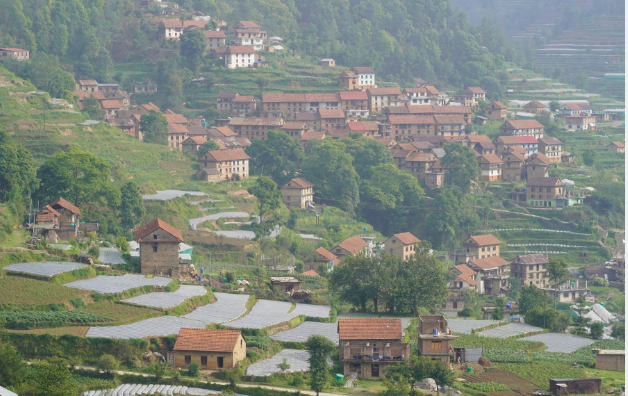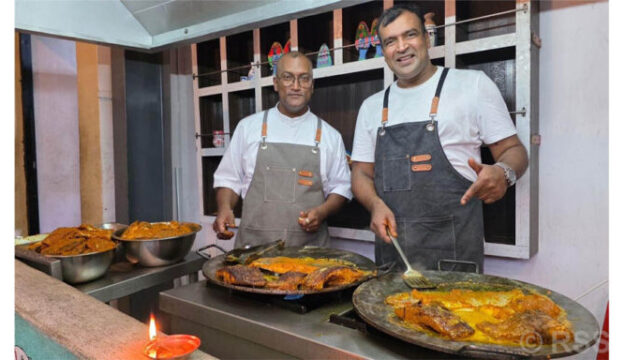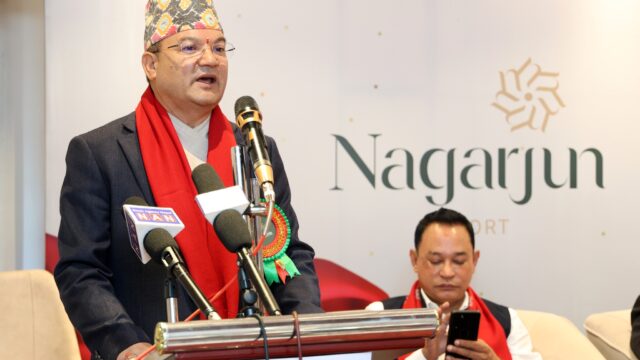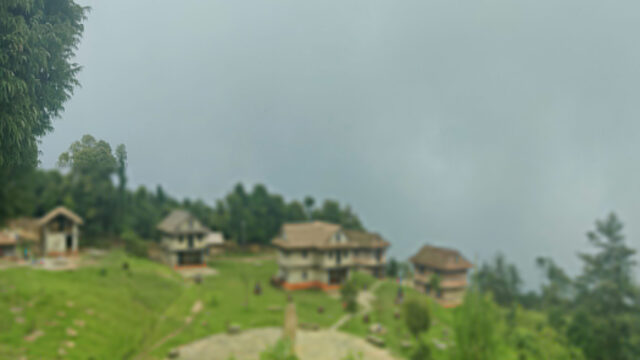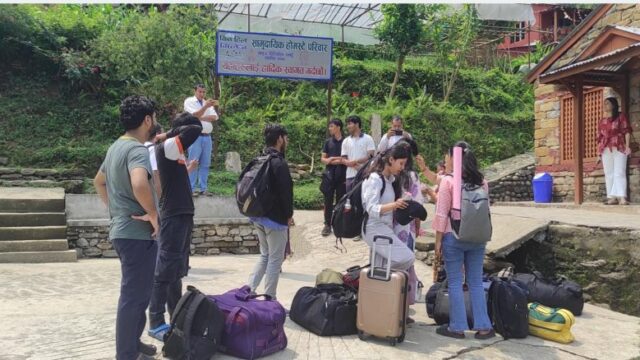It may come as a surprise that just an hour’s drive from the federal capital, Kathmandu, lies the picturesque village of Kunchhal in Thaha Municipality of Makwanpur district, a place where visitors can not only stay in 300-year-old traditional houses but also drink from ancient stone spouts dating back to the same era. Despite being a historic village, its beauty and charm resemble the scenic settlements of Switzerland or Italy, with its vibrant green surroundings, red-tiled roofs, and intricately carved windows that make it stand out from a distance.
Now operating as a community homestay destination, Kunchhal welcomes visitors with open arms. The village, historically home to the Gopali community, has been declared one of Nepal’s top three emerging tourism destinations by the Village Tourism Promotion Forum (VITOF) Nepal, on the occasion of the 38th World Tourism Day. VITOF annually selects three such villages to promote and package for tourism.
Though documented inscriptions and copperplates suggest a history of around 300 years, locals believe that the village has a legacy of over a thousand years. Remarkably, Kunchhal has never suffered damage from natural disasters, including the devastating 2015 earthquake that ravaged much of central Nepal.
Easily accessible from Kathmandu via multiple routes including a 60 km drive through the historic Tribhuvan Highway or a shorter 30 km drive via the newly opened Thanakot–Chitlang dirt road, Kunchhal is ideally situated for both local and international travelers seeking a quiet cultural escape. It is also reachable via the Farping–Fakhel–Markhu route, which is around 55 km.
Kunchhal Village
Historically, the area is believed to be connected to the Lichhavi era King Amshuvarma, with various inscriptions hinting at a rich past. What makes Kunchhal unique is its exclusive Gopali population, descendants of the Gwala community, with no ethnic mixing as seen in nearby villages.
Kunchhal’s cultural norms are equally intriguing. One unusual practice is the prohibition of poultry farming and consumption of chicken, as the community considers chickens impure. The 173 households that form the core of the village now run homestays with joint effort from youths and elders alike. According to 73-year-old community leader Bishnu Gopali, the village retains original architecture, and significant proof exists of the structures’ historical authenticity. The language spoken here is a form of Nepal Bhasa but differs significantly in vocabulary and tone from that spoken in Kathmandu, adding to the village’s linguistic uniqueness.
Women in Kunchhal have traditionally enjoyed equal social standing. As shared by 70-year-old Maijumaya Gopali, Rupchandra Bista, the initiator of the Thaha movement, used to deliver daily public education sessions in the village square, which significantly contributed to female empowerment during those times. Having lost a daughter during the civil war, she takes pride in the family’s sacrifices and continues to work on her farm, demonstrating the local work ethic. Both men and women here share responsibilities equally, from farming to cooking, and guests are often served homegrown grains and vegetables.
Thaha Municipality Mayor Bishnu Bista highlighted that a Devi Dance, linked to Kathmandu’s Hanuman Dhoka Durbar, is performed in Kunchhal every 12 years and even showcased in the palace courtyard. His vision is to develop Kunchhal as a living museum, preserving its ancient customs and integrating traditional livelihoods into modern tourism-based prosperity.
Mayor Bista also emphasized that while many nearby hill settlements were destroyed in the 2015 earthquake, Kunchhal remained unharmed, reflecting the architectural resilience and good fortune of the village. Agriculture and animal husbandry remain the main economic activities, and locals have independently invested in developing their homestays. A distinguishing feature of the community is the absence of gender-based division of labor, with traditional practices like hand-pounding rice still in favor despite the presence of modern mills.
A Trekker’s Retreat
Kunchhal is also a starting point for the Tistung–Kunchhal trekking route, which can be accessed in about an hour from Kathmandu via the Ganeshman Singh Road and Chitlang. From Hetauda, the capital of Bagmati Province, it takes around three hours via Tribhuvan Highway.
Trekkers can begin their journey from either Kunchhal or the nearby Saraswati Bazaar. The route includes scenic and spiritual highlights such as Naspathi Orchard, Ganesh Temple, and the Botanical Garden in Tistung, along with immersive experiences of rural life. The path passes through Karkichhap Village, offering insight into daily farming life and leads to the Gaukureshwar Mahadev Temple.
After a visit to Dhalgaon, trekkers continue through Adhyay Resort and Unmatteshwar Mahadev Temple, eventually reaching Kot Durbar and the spiritually significant Barahi Temple. From there, the trail ascends to Barahi Danda, rewarding hikers with breathtaking panoramic views.
Finally, the trek concludes with a walk through forest paths leading to the Nandikeshwar Mahadev Temple, wrapping up a fulfilling journey full of culture, hospitality, and natural beauty. For those planning an overnight stay, hotels in Bajrabarahi or homestays in Kunchhal offer excellent accommodations.
With its blend of ancient culture, preserved heritage, and community-driven tourism, Kunchhal is emerging as a must-visit destination, ideal for travelers seeking authenticity and peace just a short drive from the hustle of Kathmandu.
Source: RSS
